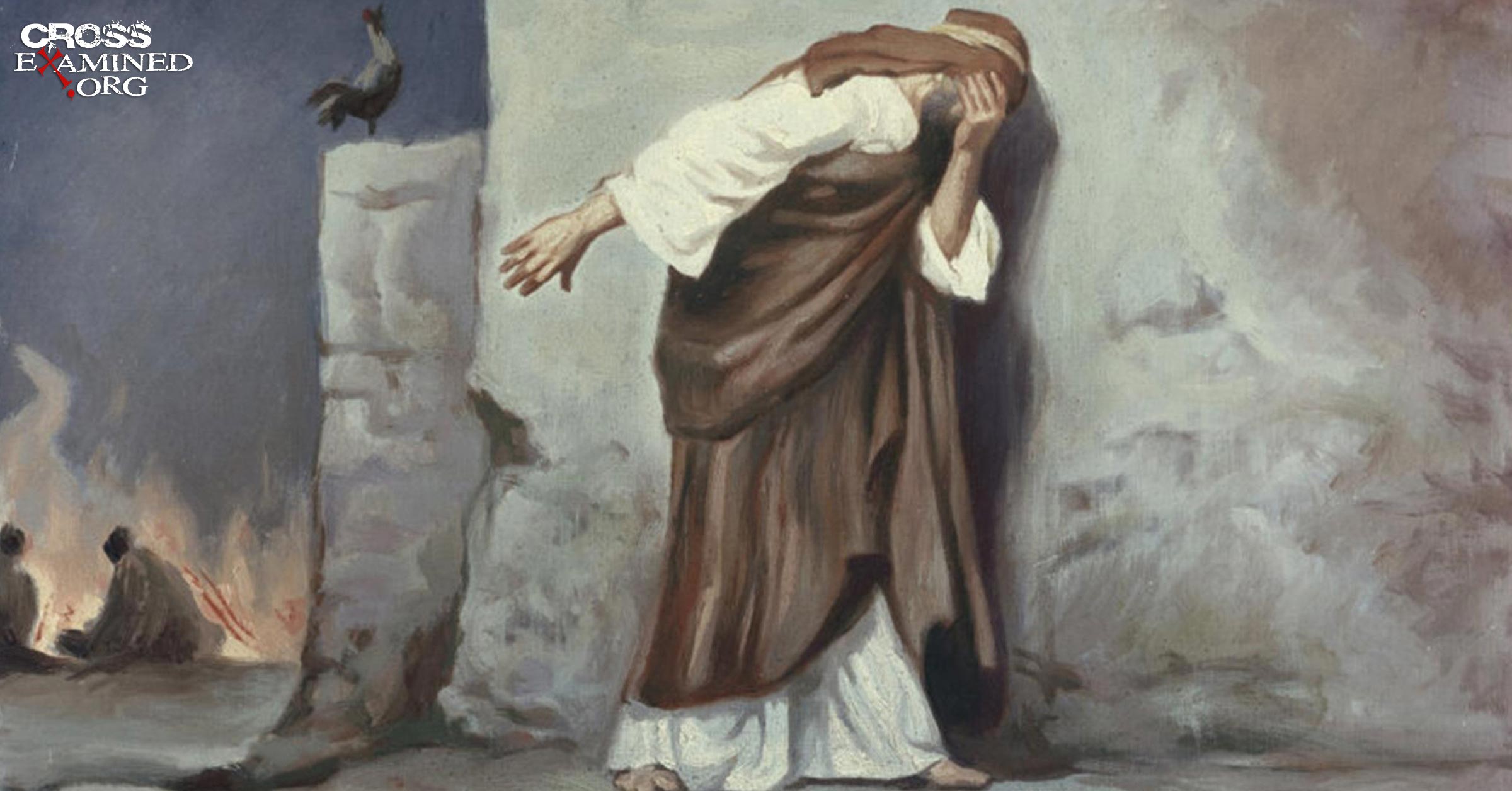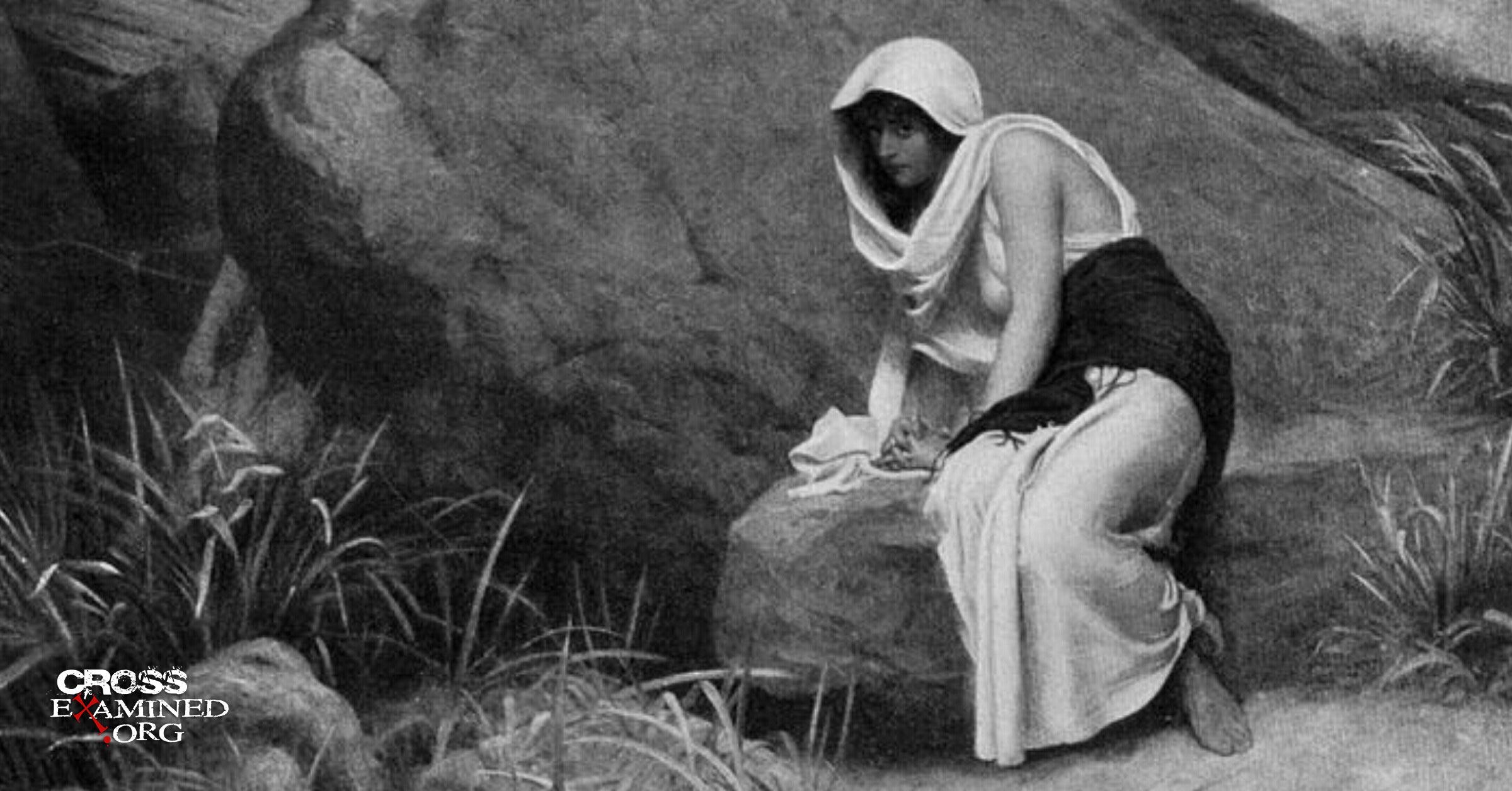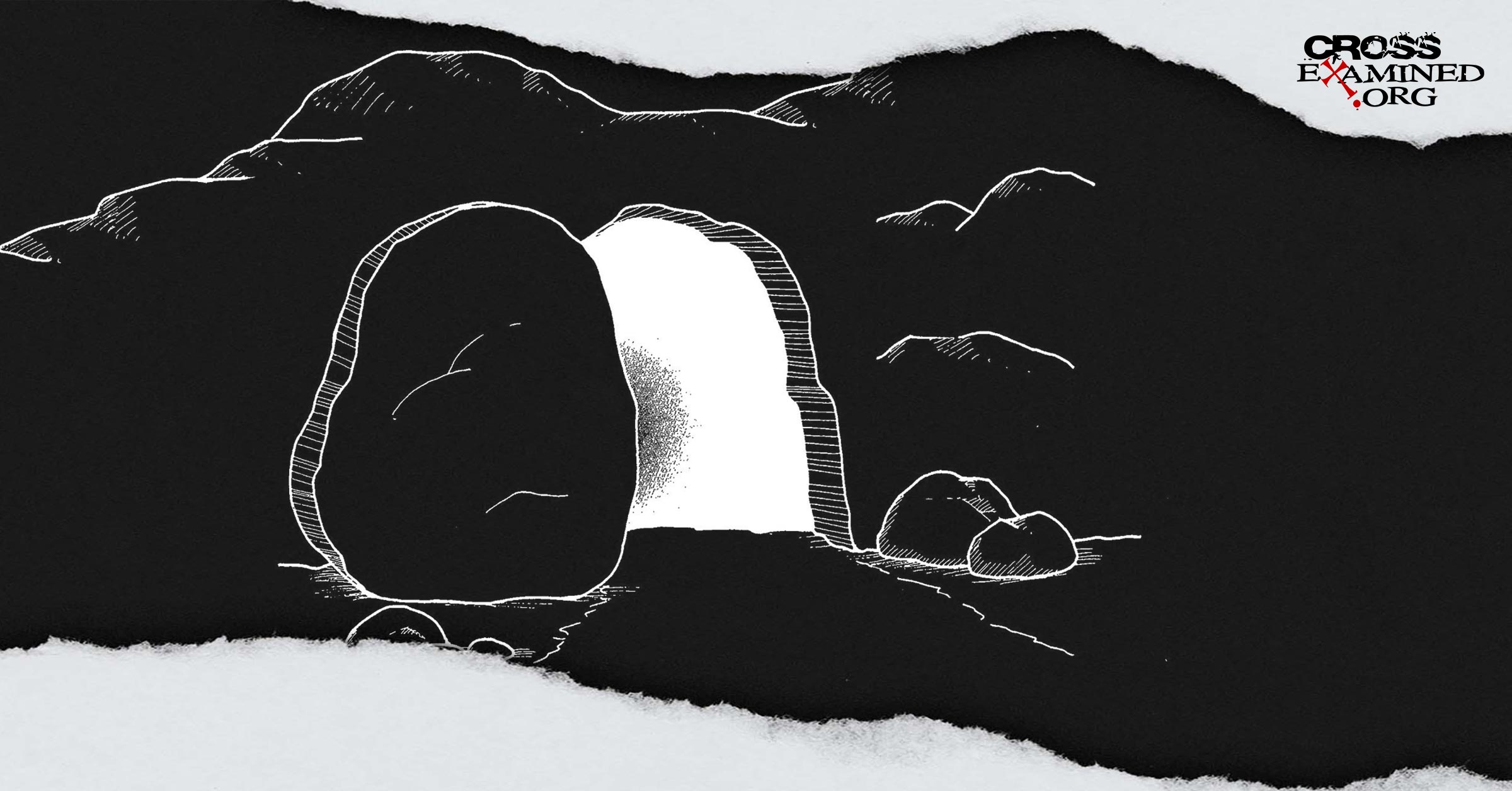By Ryan Leasure
Perhaps the most scathing statement ever made about the God of the Old Testament came from the pen of Richard Dawkins. He famously snarled:
The God of the Old Testament is arguably the most unpleasant character in all fiction: jealous and proud of it; a petty, unjust, unforgiving control-freak; a vindictive, bloodthirsty ethnic cleanser; a misogynistic, homophobic, racist, infanticidal, genocidal, filicidal, pestilential, megalomaniacal, sadomasochistic, capriciously malevolent bully.”[1]
Dawkins and his fellow New Atheists have successfully persuaded the masses into believing that God is a moral monster.
Sadly, Christians have not been immune to these attacks either. Dating back to the second-century heretic Marcion, people within the church have succumbed to the notion that the God of the Old Testament is radically different from Jesus in the New. Commenting on Marcion’s views, Michael Kruger notes that his “theology was shaped by what he regarded as an insurmountable problem with the Old Testament. He viewed the God of the Old Testament as vengeful and wrathful; and viewed the God of Jesus, as described in the writings of Paul, as peaceable, merciful, and loving.”[2]
Among other complaints, one of the more powerful critiques leveled against the God of the Old Testament is that he is anti-women. Some go so far to suggest that God places women on par with chattel. This critique is especially powerful considering the contemporary feminist movement. But is this critique warranted? Does the Old Testament portray God as negatively as some would like us to believe?
In this article, I will argue that a close examination of the Old Testament vindicates God’s morality with respect to women. I will substantiate this claim in two steps. First, I will demonstrate that the skeptic’s objections are largely based on poor hermeneutics. And second, I will examine some of the most popular “problem” texts used to advance the false narrative that God is misogynistic and establish that they do not portray God in a negative light.
Hermeneutical Principles
A surface reading of a few Old Testament texts may lead some to believe that God thinks women are inferior to men. One reason detractors have reached this conclusion is because they fail to use basic hermeneutical principles when interpreting biblical text. Specifically, critics ignore historical context, overlook the distinction between case laws and God’s ideals, and assume a mere description of an event means God’s prescription of it.
Historical Context
“The first stage in serious Bible study,” notes Grant Osborne, “is to consider the larger context within which a passage is found.”[3] He goes on to note, “Since Christianity is a historical religion, the interpreter must recognize that an understanding of the history and culture within which the passage was produced is an indispensable tool for uncovering the meaning of that passage.”[4] Osborne’s advice is especially pertinent considering the wide chasm that exists between the Ancient Near East (ANE) and twenty-first century America.
If we are to understand what Moses meant in the Penteteuch, we must have some understanding of his millieu. Moreoever, we must remember that Israel was birthed out of the ANE where partriarchy, primogeniture, polygamy, and slavery were accepted norms.[5] That is to say, Israel did not exist in a vacuum, isolated from its neighboring nations. This close proximity explains why many of those less than ideal structures existed in ancient Israel.
With this context established, one readily observes that God does not endorse the broken structures of patriarchy, polygamy, slavery and so forth. Rather, we observe that God worked within those already existing structures, seeking to make incremental moral improvements on established practices.[6] This strategy is not too different from a new pastor who aims to take his church in a new direction, but he does so gradually lest he leave others behind.
A good example of this approach comes from Jesus when talking about divorce. He notes in Matthew 19:8, “Because of your hardness of heart Moses allowed you to divorce your wives, but from the beginning it was not so.” In other words, divorce was not God’s ideal. As Jesus mentions, “from the beginning it was not so.” However, Israel existed in a fallen context where people abused their marriages. In an attempt to mitigate against divorcing one’s spouse for any reason or not being able to get a divorce even though the spouse was habitually unfaithful, Moses permitted it under certain circumstances. In this way, God’s aim was to move the needle closer towards his ideals outlined in Genesis 1-2.
Case Laws vs. God’s Ideals
Detractors also make a mistake by confusing case laws with God’s universal ideals. Unlike God’s ideals, case laws were not universal in scope. Rather, they were given in the Mosaic Law to address specific situations where people had disregarded God’s ideals. One can spot a case law because it usually begins with the words “if” or “when” and goes on to describe a certain less than ideal situation with some concluding judgments or provisions.[7]
A clear example of a case law is found in Exodus 22:1. The law states, “If a man steals an ox or a sheep, and kills it or sells it, he shall repay five oxen for an ox, and four sheep for a sheep.” Notice that this case law does not endorse theft. Instead, it recognizes that moral concessions have been made against God’s ideals (Exod 20:15). As a result, this law aimed to make the best out of a bad situation by prescribing the appropriate amount of restitution for stolen property.
With respect to women, consider Exodus 21:7-11. This case law states:
When a man sells his daughter as a slave, she shall not go out as the male slaves do. If she does not please her master, who has designated her for himself, then he shall let her be redeemed. He shall have no right to sell her to a foreign people, since he has broken faith with her. If he designates her for his son, he shall deal with her as with a daughter. If he takes another wife to himself, he shall not diminish her food, her clothing, or her marital rights. And if he does not do these three things for her, she shall go out for nothing, without payment of money.
Notice that the text begins with the word “when,” indicating that God is not prescribing slavery or misogamy. Rather, this case law assumes that the described situation is less than ideal. In this particular case, a father attempts to arrange for his daughter to marry a man with means, thus providing long-term security for her. The difficulty with the text revolves around why a man would want to buy a woman who functioned as both a servant and a wife at the same time.
What we can discern from this text is that the master had been previously married, given that he has a son. And since the son is of marriageable age, the master must be older. Therefore, the most likely explanation is that he is a widower, although divorce is a possibility. Therefore, in an attempt to protect the inheritance for his existing children from his first wife, he makes a special agreement with the woman’s family in what amounts to an ancient prenuptial agreement.
With the special considerations aside, the man was still to treat this woman as his legal wife. Biblical scholar Douglas Stuart remarks, “The original Hebrew text brings out that a woman whose service contract is purchased along with her bride price is still a real wife, with all the protections that would accrue to anyone’s daughter given in marriage in Israel under the provisions of the covenant.”[8] Meaning, if the man married the woman, he had to protect her and love her as his own wife.
The text goes on to provide additional provisions for the woman. First, if the master did not follow through with marriage, then the woman could be redeemed. This provision implies that the original agreement assumed marriage, not simply servitude. He cannot, however, sell her to foreigners.
Another viable option was that the woman could marry the master’s son. If this situation were to transpire, then the father must treat her like his own daughter.
But, if the son marries someone else, and no other suitor redeems the woman, then the father is to provide for her as if she had married into the family. Because most women could not provide for themselves in the patriarchal world of the Ancient Near East (ANE), women relied on marriage as a means of survival. Again, this sample case law does not provide a universal norm. It merely seeks to make the best out of a less than ideal situation.
God’s ideals, on the other hand, refer to his heart on the matter and are universal in scope. Meaning, God’s ideals are his desires for all people at all times. And a quick examination of these ideals reveals that God is actually for not against women. Consider Genesis 1:27 which claims, “So God created man in his own image, in the image of God he created him; male and female he created them.” As a result of being made in God’s image, both men and women are equally valuable to him.
Also consider Genesis 2:24 which asserts, “a man shall leave his father and mother, and be joined to his wife; and they shall become one flesh.” According to biblical scholar Gordon Wenham, it is easy for us to miss the significance of this transition in relationships. He remarks, “In modern Western societies where filial duties are often ignored, this may seem a minor point to make, but in traditional societies like Israel where honoring parents is the highest human obligation next to honoring God, this remark about forsaking them is very striking.”[9] In other words, God placed such a high value on the new wife, that he commanded man to make her his highest priority, even higher than his parents.
In these two passages alone, we discover God’s heart for women. He values them just as much as he values men.
Prescriptive vs. Descriptive
A third hermeneutical principle critics ignore is the distinction between prescriptive and descriptive texts. Prescriptive texts are clear commands or prohibitions from Scripture. For example, God forbids murder (Exod 20:13). At the same time, Scripture describes murder (Gen 4:8). What should be plainly obvious is that Scripture’s description of an event does not imply God’s approval of it. Certainly, God did not approve of how the men treated the concubine in Judges 19 despite Scripture’s description of the horrific event.
If someone fails to grasp these hermeneutical principles, they will misinterpret the Old Testament.
“Problem” Texts
In this section, we will consider three types of texts that skeptics claim portray God as misogynistic. Specifically, we will consider texts dealing with polygamy, the bride-price, and women POWs.
Polygamy
The practice of polygamy is well established in the Old Testament. Be that as it may, God never prescribes polygamy. On the contrary, he asserts that a man should “be joined to his wife; and they shall become one flesh” (Gen 2:24). Moreover, Leviticus 18:18 forbids polygamy when it declares, “And you shall not take a woman as a rival wife to her sister, uncovering her nakedness while her sister is still alive.” While some argue that this text-only forbids incestuous relationships, a good case can be made that it forbids polygamy altogether. As Paul Copan argues, “This phrase ‘a woman to her sister’ and its counterpart, ‘a man to his brother,’ are used twenty times in the Hebrew Scriptures, and never do they refer to a literal sister or brother.”[10] Finally, God specifically forbade the kings of Israel to take multiple wives (Deut 17:17).
At the same time, the Old Testament describes several polygamous situations. One thinks of David and Solomon who disregarded God’s prescribed ideal (Deut 17:17). When it came to Israel’s rulers, however, taking multiple wives and concubines was typically for political purposes, not sexual advances.[11] But again, a mere description of polygamy in no way suggests that God endorsed it. In fact, where polygamy is described, discord and strife quickly follow.[12]
Consider the case law found in Deuteronomy 21:15-17. It reads:
If a man has two wives, the one loved and the other unloved, and both the loved and the unloved have borne him children, and if the firstborn son belongs to the unloved, then on the day when he assigns his possessions as an inheritance to his sons, he may not treat the son of the loved as the firstborn in preference to the son of the unloved, who is the firstborn, but he shall acknowledge the firstborn, the son of the unloved, by giving him a double portion of all that he has, for he is the firstfruits of his strength. The right of the firstborn is his.
This case law refers to a polygamous situation which is already under way—a clear violation of God’s ideals (Gen 2:24). Now that the deed is done, how should the Israelites make the best out of this messy situation?
Some might be tempted to think that the man should divorce one of his wives. But taking that route would actually do more harm than good. After all, it was extremely difficult for a non-virgin woman to get married in that culture. More than that, women had difficulty fending for themselves and relied heavily on men. For these reasons, the law does not encourage divorce.
Moreover, polygamy is not even the point of the law. As Eugene Merrell notes, “The matter of law that is pertinent here is the proper bestowal of inheritance rights.”[13] In other words, this law ensured that the husband followed the proper customs by giving the firstborn son the inheritance, irrespective of who his mother was. Yes, the case law assumes polygamy occurred; but that is a far cry from God’s endorsement.
Bride-Price
In addition to polygamy, many of the same skeptics suggest that bride-price laws treated women like chattel. A closer examination of the law, however, reveals that it existed to protect woman and express the solemnity of the marriage covenant. As Paul Copan notes, “the bride-price was the way a man showed his serious intentions toward his bride-to-be, and it was a way of bringing two families together to discuss a serious, holy, and lifelong matter.”[14]
The bride-price also provided compensation to the woman’s father for the work she would have otherwise contributed to her family and served as a financial safety net for the women in the case of divorce or the husband’s early death.[15]
Consider Exodus 22:16-17. This case law reads, “If a man seduces a virgin who is not betrothed and lies with her, he shall give the bride-price for her and make her his wife. If her father utterly refuses to give her to him, he shall pay money equal to the bride-price for virgins.”
In this particular case, a man seduced a virgin whom he had no intentions of marrying. His act showed complete disregard for the value of the woman, jeopardizing her future prospects of marriage. Therefore, in an attempt to hold him accountable for his sexual advances, the law mandates that he pay the bride-price and marry the woman, provided that her father agrees. Douglas Stuart suggests, “Since it would be much harder to marry her to someone else once she had been sexually compromised, [the father] was still owed the bride price for her, lest no bride price ever be paid in the case that she was never, in fact, married thereafter.”[16]
While the arrangement may not find its way into a Hallmark movie, it presents the best-case scenario for the woman in ancient Israel. It protected her from unwanted sexual advances, and it provided her with long-term financial security. At the same time, though, the father of the woman had the right to refuse the suitor while simultaneously keeping the bride-price. One can assume that the father and the daughter usually made a joint-decision in situations like this one (Gen 24).
In sum, the bride-price protected women against sexual advances, expressed the seriousness of the marriage covenant, strengthened relations between the two families, and offered financial security for the woman. It did not imply that women were mere property.
Women POWs
Finally, critics also claim that Israelite men were allowed to capture and rape foreign woman POWs. Yet, a closer examination of key texts refutes this assertion. Deuteronomy 21:10-14 declares:
When you go out to war against your enemies, and the LORD your God gives them into your hand and you take them captive, and you see among the captives a beautiful woman, and you desire to take her to be your wife, and you bring her home to your house, she shall shave her head and pare her nails. And she shall take off the clothes in which she was captured and shall remain in your house and lament her father and her mother a full month. After that you may go in to her and be her husband, and she shall be your wife. But if you no longer delight in her, you shall let her go where she wants. But you shall not sell her for money, nor shall you treat her as a slave, since you have humiliated her.
Notice how this case law actually offers protection for women. Instead of instantly raping the women—which was normal procedure among other ANE cultures[17]—the law ordered Israelite men to wait at least a month before getting married and engaging sexually with the woman.
This waiting period served multiple purposes. First, it prevented the Israelite soldier from entering into marriage too hastily in uncontrolled lust like one might see in Las Vegas. In fact, we can assume that this allotted time period prevented scores of unhappy marriages since the law assumes that Israelite soldiers often lost desire for the woman after the month’s end. If this change in feeling occurred, the soldier was to let the woman go. In no circumstances was her allowed to treat her as a slave.
A second reason for the waiting period was to allow the woman time to mourn her family and reflect on the prospect of integrating into the Israelite community. As Eugene Merrill argues, “The idea behind all these procedures seems to be that of cutting off all ties to the former life in order to enter fully and unreservedly into the new one. This presupposes a degree of willingness on the part of the maiden to forsake the past and to embrace a new and different way of life, for one can hardly conceive of all this taking place coercively.”[18]
In the end, this law forbade rape of any kind by prescribing a one-month waiting period for women POWs. At month’s end, the Israelite soldier could choose to marry the woman (if she acquiesced) and then have sexual relations with her.
Another difficult text related to women POWs is Numbers 31:17-18. When referring to the Midianite women, Moses ordered the Israelite officers to “kill every woman who has known man by lying with him. But all the young girls who have not known man by lying with him keep alive for yourselves.” Admittedly, this text looks damning on the surface. The context, however, provides explanation.
In Numbers 25 we read that the Midianite women seduced the Israelite men and compelled them to worship Baal. Baal worship, it must be noted, was not simply bowing to an idol. Rather, it included temple prostitution, bestiality, and a whole littany of other sexual sins. This pagan worship involving sexual immorality was the motivation behind God’s command to destroy the Midianite women while sparing the virgins.
The virgins, after all, had not seduced the Israelite men. It was the non-virgin women who participated with the Israelite men in pagan sexual immorality.[19] And lest we think God did not hold the men accountable for their action, Numbers 25 tells us that God sent a plague and wiped out twenty-four thousand of them for their sin. After sparing the virgins, then, the Israelite men would have then followed protocal from Deuteronomy 21:10-14, waiting at least one month before marrying the virgin and engaging sexually with her.
Conclusion
As this article indicates, a close examination of the Old Testament vindicates God’s morality with respect to women. I substantiated this claim in two steps. First, I established that most critics reach their negative conclusions using faulty hermeneutics. And second, I examined several “problem” texts and demonstrated that they do not portray a misogynistic attitude on God’s part.
Certainly, the ancient patriarchal society was far from ideal. But Israel’s treatment of women was a vast improvement over their Canaanite neighbors. And while we might wish that the Israelites had progressed, even more, they laid the groundwork for even more female advancement in the New Testament. Eventually, it was the church, following the example of Jesus, who dramatically raised the status of woman worldwide. Therefore, it is not an exaggeration to state that modern-day feminists have Christians to thank for the advancement of women in our society.
Footnotes
[1] Richard Dawkins, The God Delusion (New York: Houghton Mifflin, 2006), 51.
[2] Michael J. Kruger, Christianity at the Crossroads: How the Second Century Shaped the Future of the Church (Downers Grove, IL: IVP Press, 2018), 117.
[3] Grant R. Osborne, The Hermeneutical Spiral: A Comprehensive Introduction to Biblical Interpretation (Downers Grove, IVP Press, 2006), 37.
[4] Grant R. Osborne, The Hermeneutical Spiral, 158.
[5] Paul Copan, Is God a Moral Monster? Making Sense of The Old Testament God (Grand Rapids: Baker Books, 2011), 60.
[6] Paul Copan, Is God a Moral Monster? 61.
[7] Christopher J. H. Wright, Old Testament Ethics for the People of God (Downers Grove, IL: IVP Press, 2004), 292.
[8] Douglas K. Stuart, Exodus, The New American Commentary (Nashville, B&H Publishing, 2006), 483.
[9] Gordon J. Wenham, Genesis 1-15: Word Biblical Commentary (Mexico City: Thomas Nelson, 1987), 71.
[10] Paul Copan, Is God a Moral Monster? Making Sense of The Old Testament God (Grand Rapids: Baker, 2011), 113.
[11] Christopher J. H. Wright, Old Testament Ethics for the People of God, 330.
[12] Christopher J. H. Wright, Old Testament Ethics for the People of God, 331.
[13] Eugene H. Merrill, Deuteronomy: The New American Commentary (Nashville, B&H Publishing, 1994), 292.
[14] Paul Copan, Is God a Moral Monster? 117.
[15] Paul Copan, Is God a Moral Monster? 117.
[16] Douglas K. Stuart, Exodus, 510.
[17] Paul Copan, Is God a Moral Monster? 120.
[18] Eugene H. Merrill, Deuteronomy, 291.
[19] Gordon J. Wenham, Numbers: An Introduction and Commentary (Downers Grove, IL: IVP Press, 1981), 211.
Recommended resources related to the topic:
LifeGivers Apologetics: Women Designed and Equipped to Share Reasons for the Hope Within (Book/ Study Guide – Teacher’s Version and Student’s Version) by Tricia Scribner
Major Truths from the Minor Prophets (Book) by Edna Ellison, Kimberly Sowell & Tricia Scribner
Woman to Woman: Preparing Yourself to Mentor (Book) by Edna Ellison & Tricia Scribner
________________________________________________________________________________________________________________________________________________
Ryan Leasure holds a Master of Arts from Furman University and a Master of Divinity from the Southern Baptist Theological Seminary. Currently, he’s a Doctor of Ministry candidate at the Southern Baptist Theological Seminary. He also serves as a pastor at Grace Bible Church in Moore, SC.
Original Blog Source: https://cutt.ly/9xZOg9j











